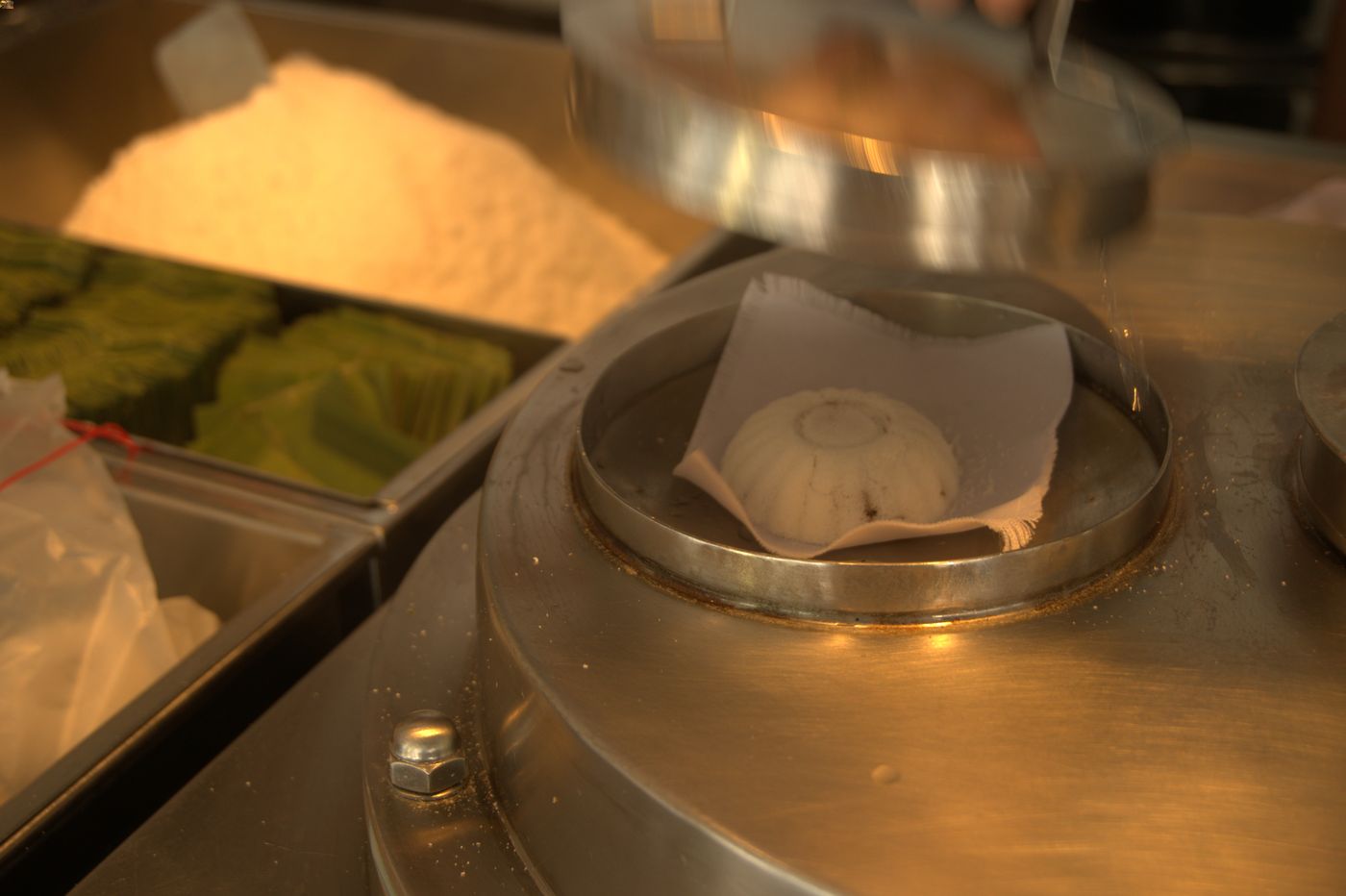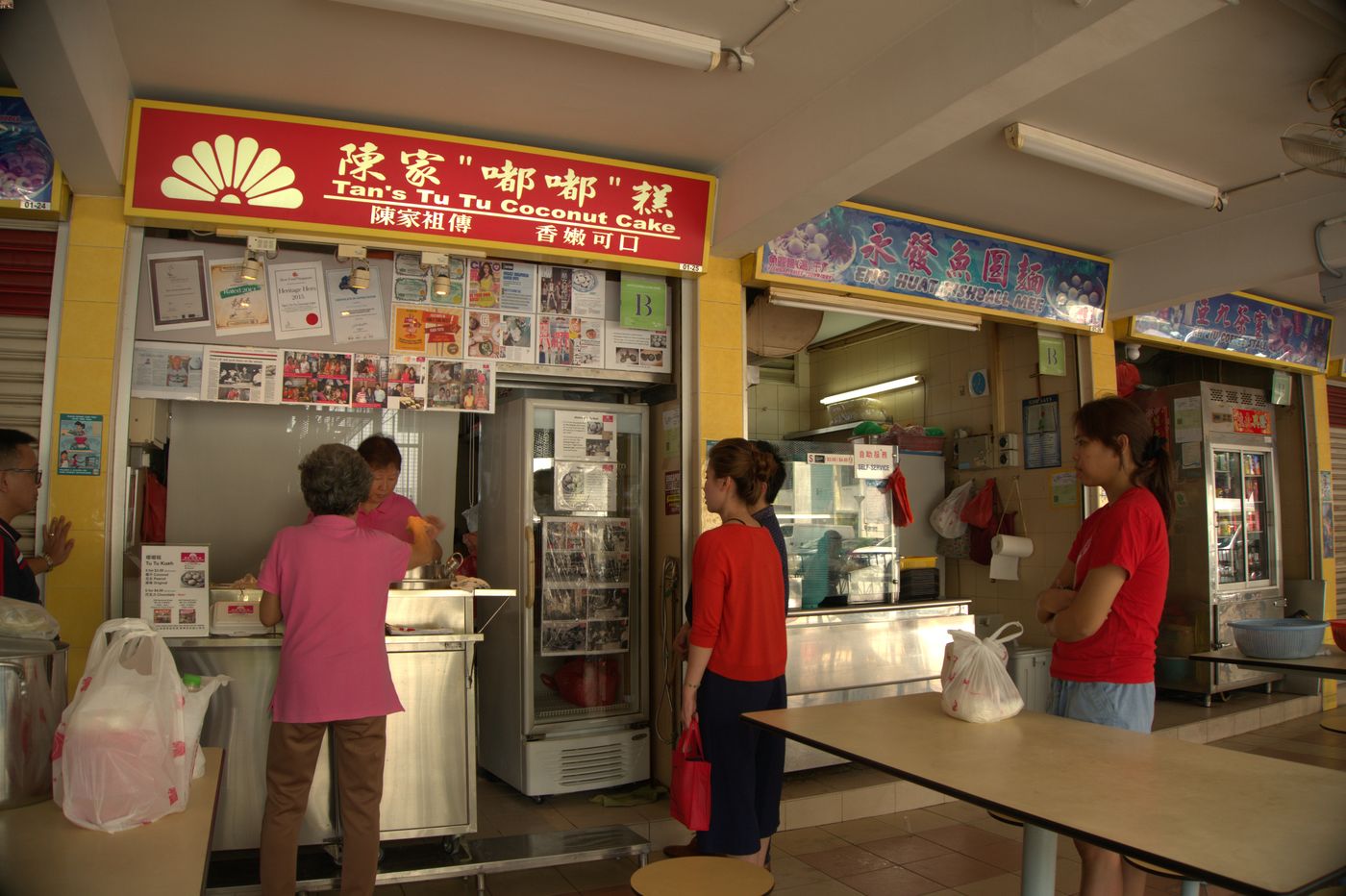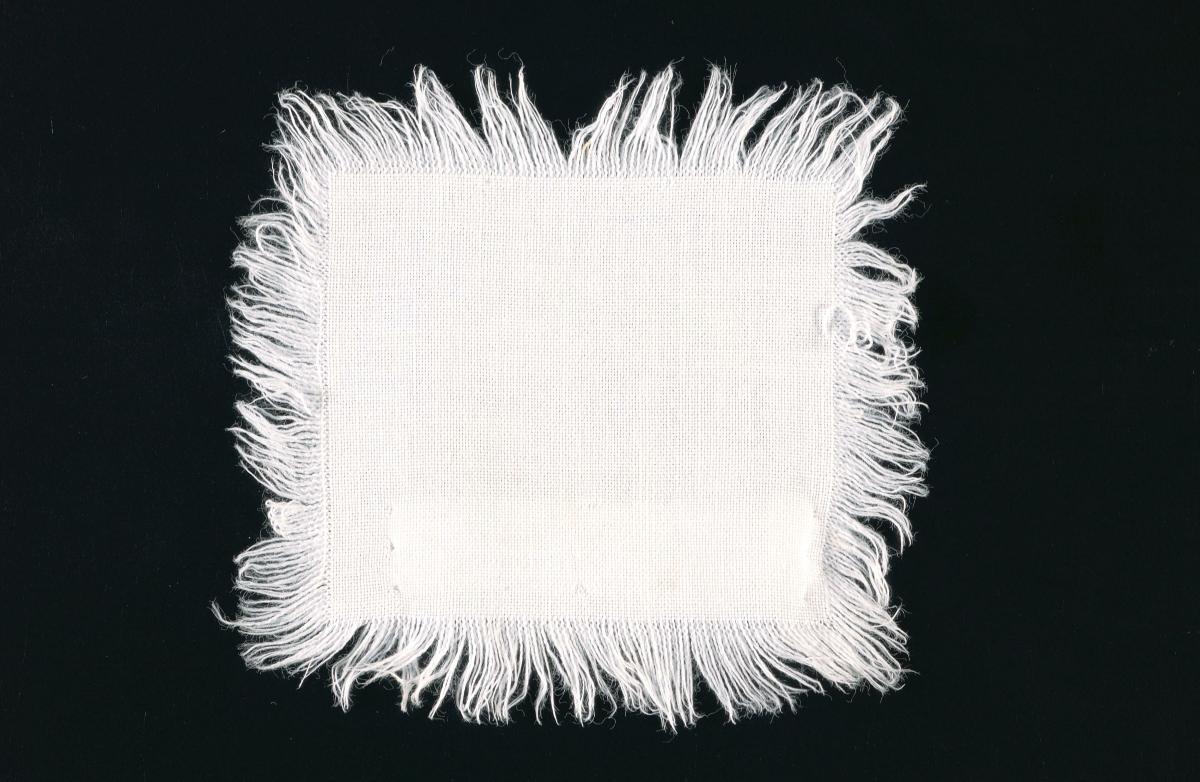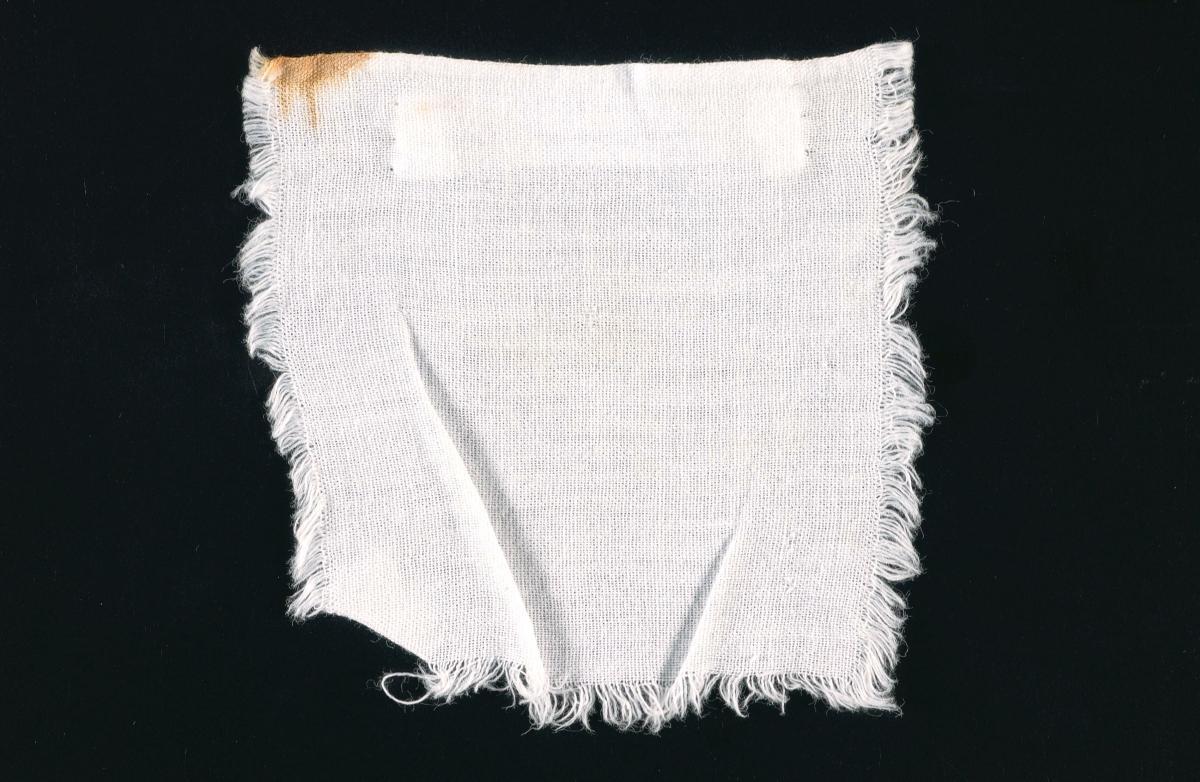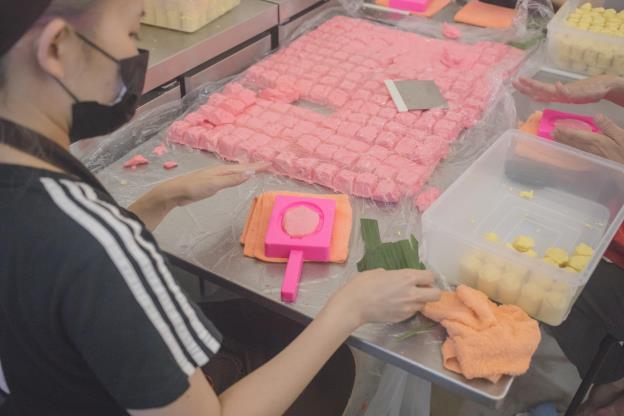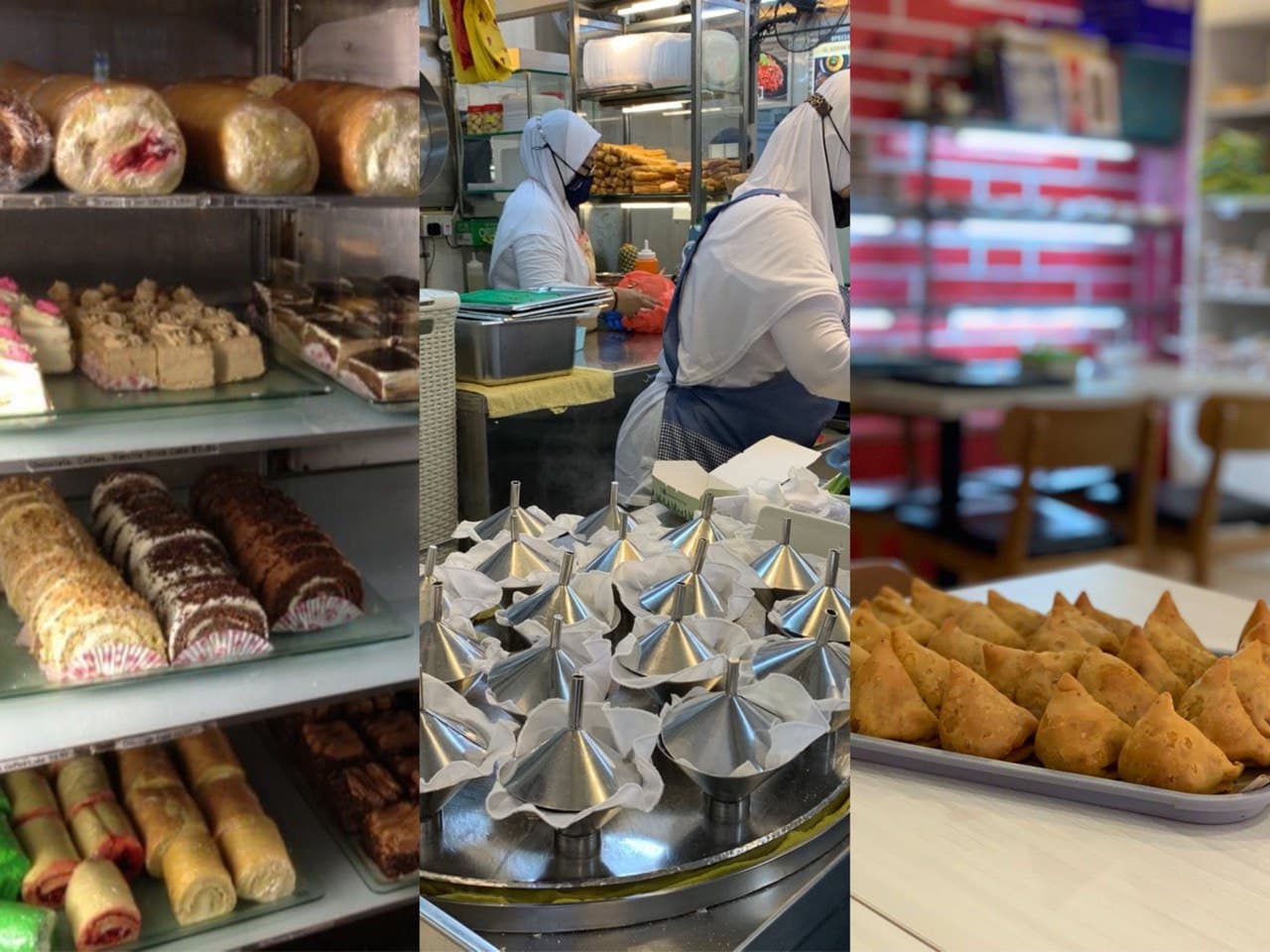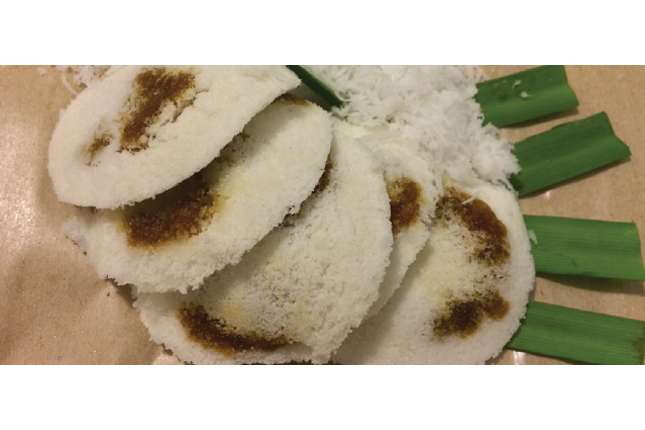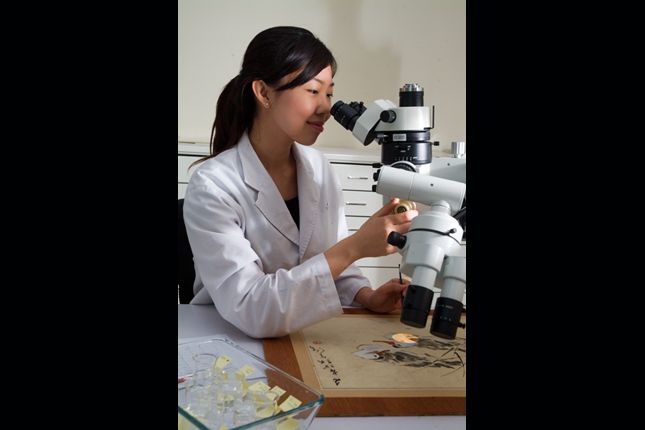Kueh Tutu
Kueh tutu is a small steamed cake made of finely pounded rice flour, typically with ground peanuts or grated coconut filling. The methods of making kueh tutu and its ingredients are similar to those of putu piring, a popular Malay snack which is said to have origins in South Indian’s putu mayam. Hence the existence of claims that kueh tutu could have been of South Indian origins, and that the term tutu comes from the word putu. Putu piring, which uses gula melaka (palm sugar) as filling and is served with fresh grated coconut.
Many also associate kueh tutu to be of Singaporean origin. This rice snack is said to have been created in Singapore in the 1930s by Mr Tan Eng Huat, who hailed from Fujian, China. Mr Tan was said to have been inspired by the Chinese rice cake known as soon kueh in Hokkien. He came up with the idea of making smaller rice cakes, and added fillings such as coconut shreds and pounded peanuts, to the delight of customers. Each piece of kueh tutu was served on a pandan leaf, to add fragrance.
Geographic Location
Kueh tutu is commonly sold and enjoyed alongside cup corn and other finger food at pasar malam (night markets), as well as in stalls at hawker centres.
Communities Involved
There are various food establishments and hawker stalls that sell kueh tutu in Singapore. Two well-known family enterprises who take heart in preparing the rice cakes based on family recipes are Lau Tan Tutu Kueh and Tan’s Tutu Coconut Cake. The former was started by first-generation kueh tutu maker Mr Tan Hay Swee in 1949. The latter was established by the creator of kueh tutu, Mr Tan Eng Huat. Interestingly, both first-generation makers and sellers had lived in the “pasoh beh” area, a colloquial term for Bukit Pasoh Road, where many Chinese migrants settled in the early 20th century.
The wider community in Singapore of diverse age groups and ethnicities enjoy and consumes kueh tutu.
The snack has also been brought overseas by the Tan family, who introduced it to their relatives in Shaocuo Village in Quanzhou prefecture, Fujian province, China.
Associated Social and Cultural Practices
Kueh tutu is usually in a flower-shaped form, believed to have be inspired by the chrysanthemum flower as it was common for first-generation migrants in Singapore to drink chrysanthemum tea for relief from the tropical heat at one point in time. Some have also shared the story of how the name kueh tutu allegedly originated from the sound produced by the charcoal steamer used for making the first kueh tutu. Specialised equipment, knowledge and skills are needed to prepare this snack.
The making of kueh tutu involves the tradition of pounding and sifting rice grains to obtain a white and light rice flour. This is naturally a labour-intensive and costly process.
To make the kueh, the mould is first filled with rice flour. A gap is scooped out, and filled with either shredded coconut or ground peanuts, then covered with more flour. The mixture is covered with muslin cloth before steaming. The kueh is then served on small square pieces of pandan leaf. In contrast, a cheesecloth is usually used to cover putu piring before steaming, while a banana leaf is used in addition to a topping of freshly grated coconut for a savoury taste. The Malay putu piring and the South Indian putu mayam are often served as dishes during major festival such as Hari Raya Puasa and Deepavali, and at weddings and birthdays.
Kueh tutu were peddled on streets including at Chinese opera sites, carnivals and amusement parks in 1970s due to the crowds gathered there. These food items have become part of Singapore’s social practice of hawker and pasar malam culture.
Experience of a Practitioner
Tan’s Tutu Coconut Cake is now run by Ms Tan Bee Hua, the founder’s daughter. She has helped her father with the business since she was a child. The founder’s grandson, Mr Jacky Tan Boon Perng, also helps out at the stall. The Tan family is adamant in using top-grade rice, which they feel differentiates their product from others. However, due to how kueh tutu is associated as a small street snack, most Singaporeans expect the price to be low. Thus, the family is unsure about the viability of their business beyond the second generation.
In 2015, Tan’s Tutu introduced chocolate filling, using dark chocolate with higher cocoa content. Innovations by other kueh tutu makers include using red bean filling or chocolate sprinkles.
Present Status
Kueh tutu is popular in Singapore to the extent that the shape of the kueh has been used as a design for products ranging from erasers to cushions by Meykrs, a Singapore design and manufacturing firm. As the snack is still commonly found at night markets and is well-known to residents of Singapore, it is likely to continue being a local favourite. Just as the Tan family shared it with relatives in China, kueh tutu is following the Singaporean diaspora to other parts of the world as well.
References
Reference No.: ICH- 068
Date of Inclusion: March 2019
References
Ang, Adeline. “The Sound of Food: Tu Tu, Lok Lok Ding Ding And Kok Kok.” Makansutra, 24 February 2015.
Lim, Yi Han. “Hard toil and good times on the streets.” The Straits Times, 13 July 2013.
Kong, Lily and Sinha, Vineeta. Food, Foodways and Foodscapes: Culture, Community, and Consumption in Post-Colonial Singapore. Singapore: World Scientific Publishing, 2015.
Wong, Hong Suen. Wartime Kitchen: Food and Eating in Singapore. Singapore: Editions Didier Millet, 2009.




